How to Check Room Temperature and Humidity Using HomePod
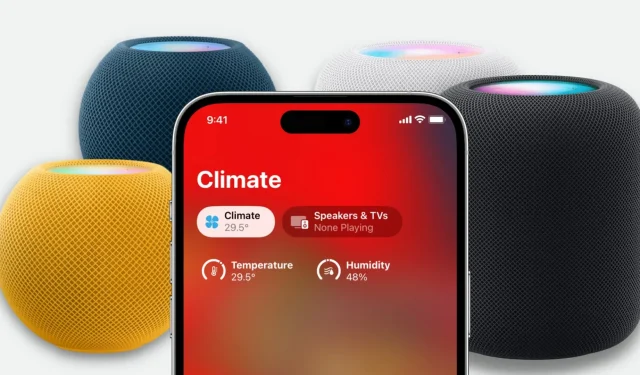
HomePod mini and 2nd generation HomePod have built-in temperature and humidity sensors that tell you the temperature and humidity levels of the room your smart speaker is in. You do not need to perform additional configuration or buy additional devices.
In this guide, we’ll show you how to get indoor temperature and humidity data directly to HomePod or the Home app on iPhone, iPad, and Mac.
Before you begin: Make sure your HomePod mini or HomePod 2nd generation software is updated to version 16.3 or later.
1. Ask Siri to tell you the temperature and humidity
- Make sure your HomePod is turned on.
- Say, “Hey Siri, how’s the temperature in [bedroom]”or “Hey Siri, how’s the humidity in [kitchen].”You can change “bedroom”or “kitchen”to the name of the room your HomePod is in.
Don’t forget to say the name of the room
You don’t have to just ask “Hey Siri, what’s the humidity”or “Hey Siri, what’s the temperature.”This will most likely give you the humidity and temperature in your area, not readings specific to your room where the HomePod is stored.
How to find out the name of the room where the HomePod is stored:
- Open the Home app on your iPhone and go to the Home tab.
- From here, tap HomePod.
- Scroll down and you’ll see the name of the room, such as “Bedroom”, “Kitchen”, “Dining Room”, etc. Remember the name of this room and use it in your “Hey Siri”request.
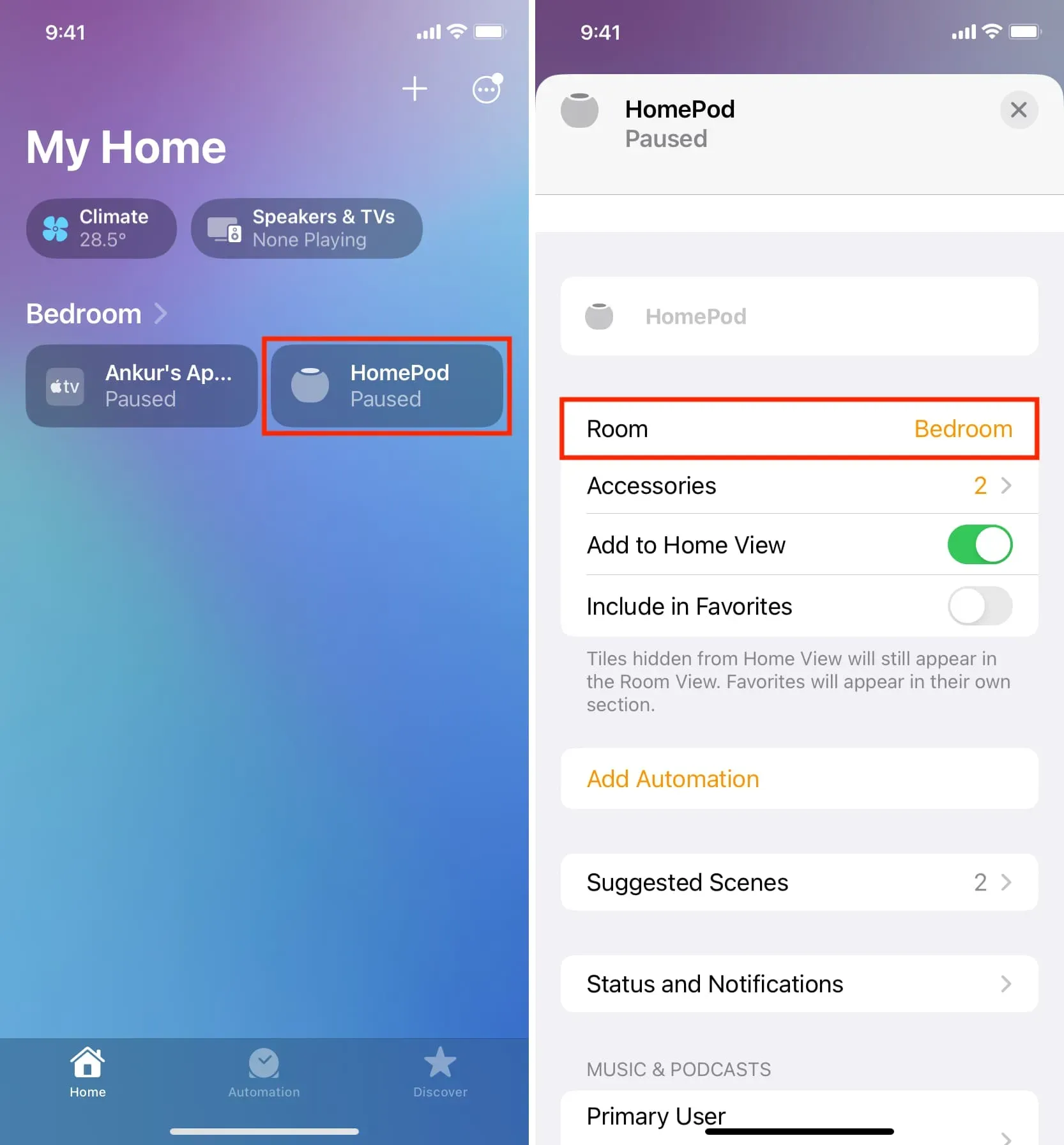
Note. You can also ask the same question to Siri on your iPhone or iPad, and it will use your HomePod’s sensor readings to tell you temperature and humidity levels.
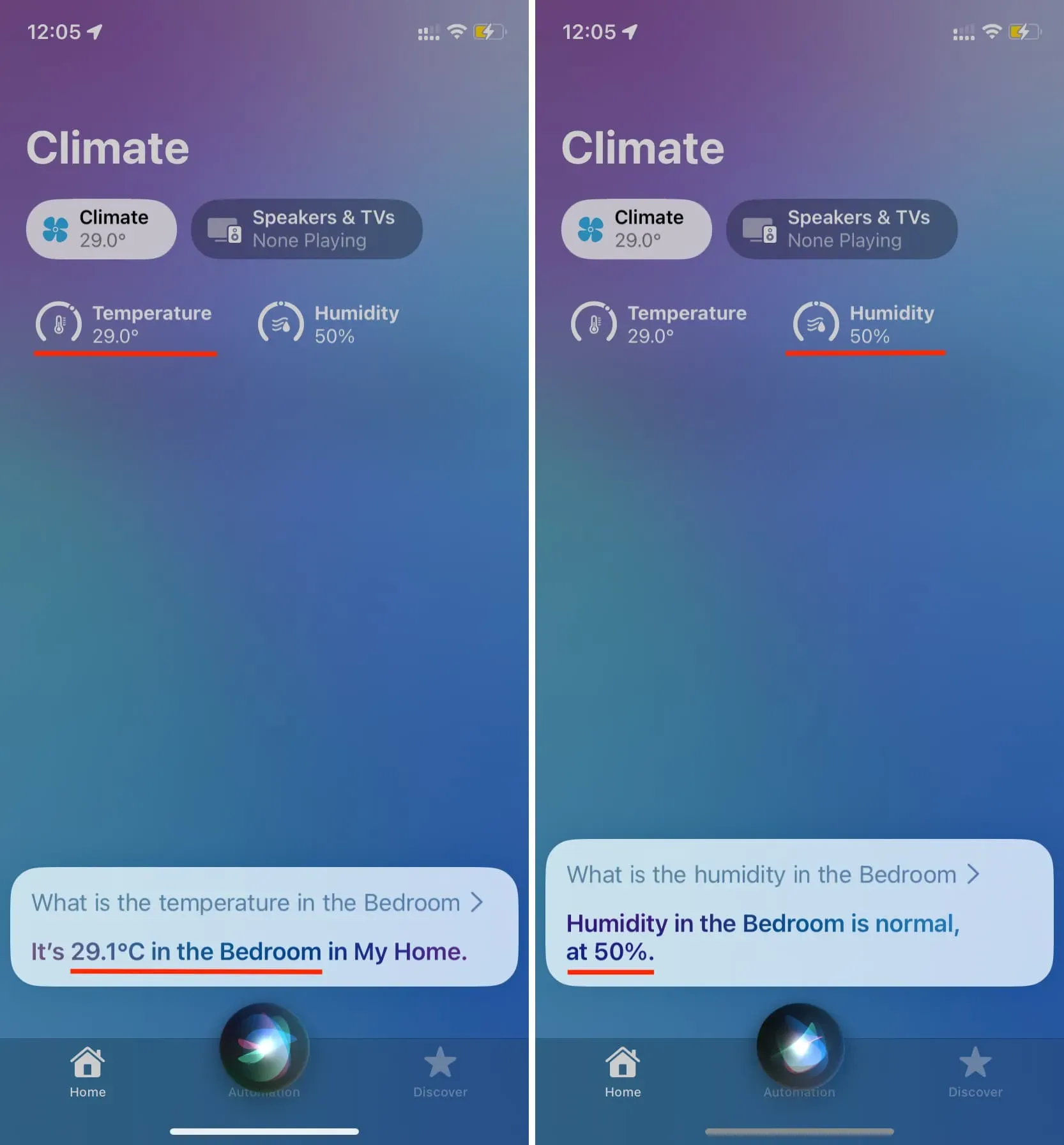
2. See temperature and humidity in the Home app.
- Open the Home app on your iPhone, iPad, or Mac.
- Go to the “Home”section and click “Climate”at the top.
- This is where you’ll see the temperature and humidity readings given by your HomePod (if that’s your only temperature/humidity device).
- You can click Temperature or Humidity to see options such as sensor status, the ability to create an automation, and more. Also, if you have multiple HomePods or temperature devices, you should see them listed here and select one to see readings from that particular device.
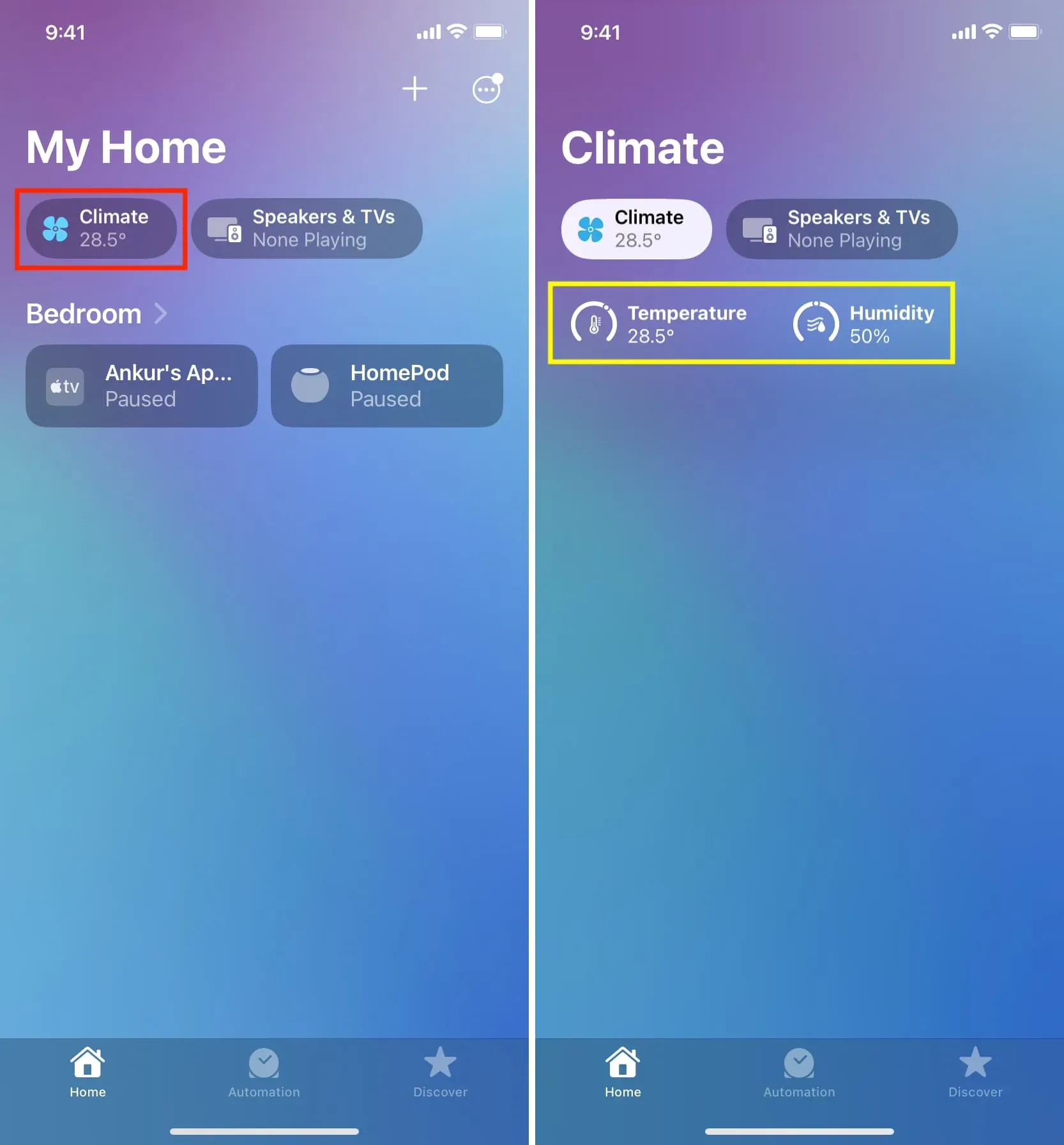
3. View temperature and humidity in each room
If you’ve created multiple rooms with different HomePods in each, you can also visit individual rooms to see humidity levels and temperatures.
On iPhone
- Open the Home app.
- Click the “More”button in the upper right corner of the “Home”section.
- Select one of your rooms to see its temperature and humidity.
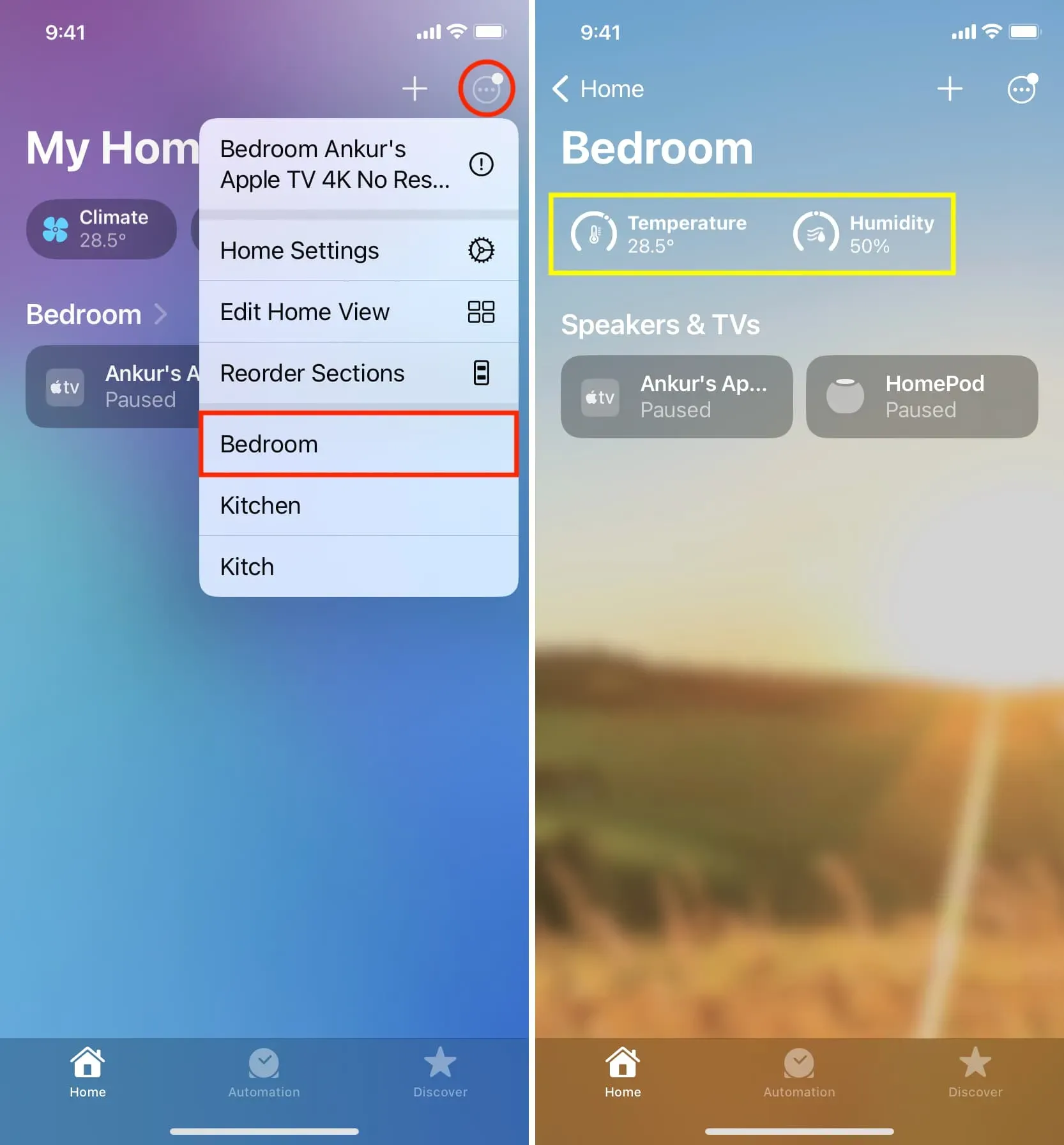
On iPad
- You can select your room from the left sidebar when iPad is in landscape.
- And if your iPad is in portrait orientation, tap the sidebar icon at the top left to open your rooms.

On Mac
You can select a room on the left side of the Home app and see the temperature and humidity there.
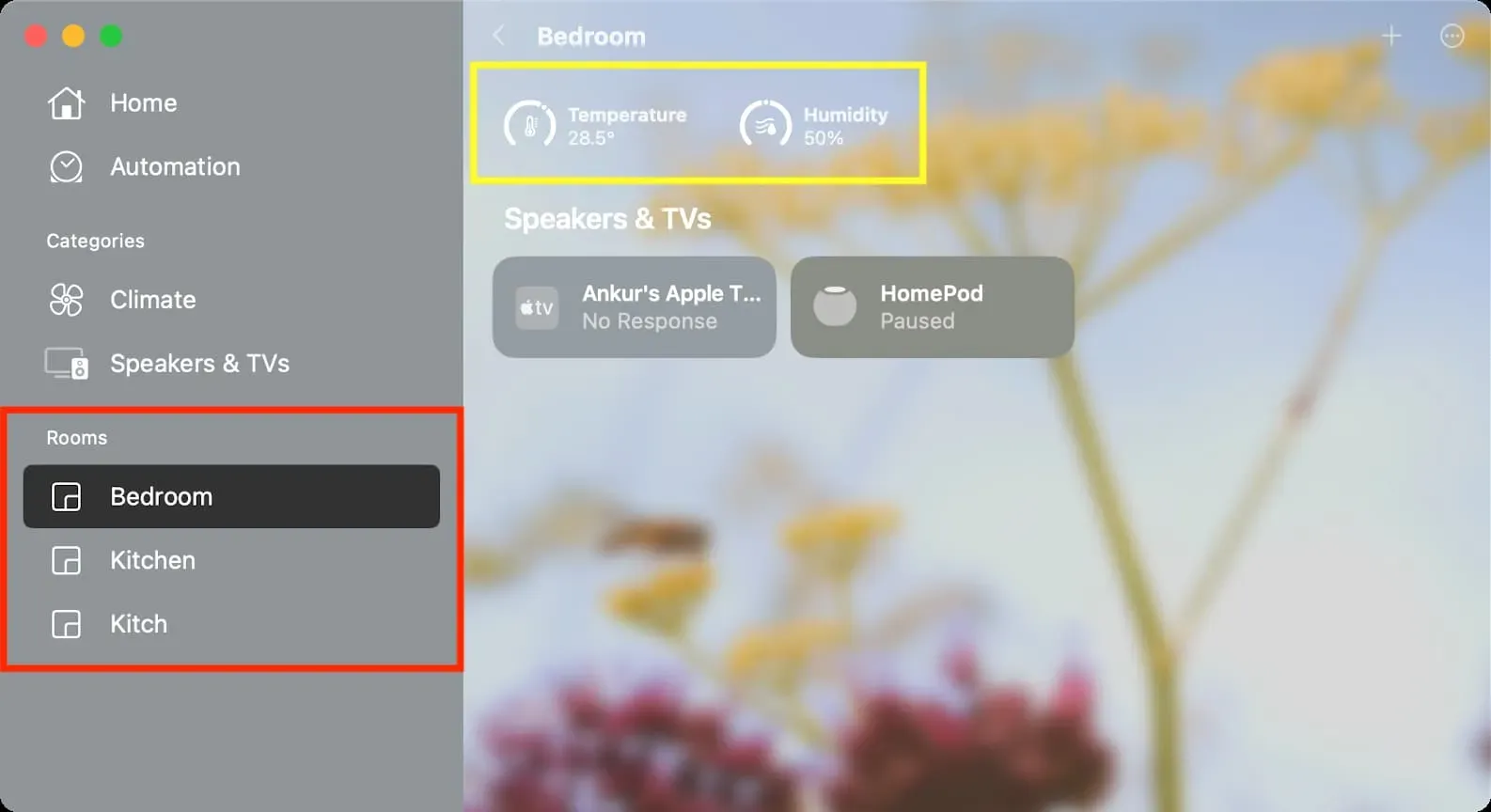
Are HomePod sensors accurate?
In small print on the official Apple HomePod page, it mentions that temperature sensors optimize between 15°C and 30°C, and humidity sensors at 30% to 70% relative humidity.
As such, HomePod sensors may not give correct readings if the temperature or humidity around you is outside of the above range.
In addition, temperature and humidity accuracy may be affected if you play audio on your HomePod at high volume for a long time. This is mainly due to the internal heat generated by your HomePod, which can affect the sensors.
Leave a Reply